How Long Do Pumpkins Last?
Here’s all you need to know about the shelf life and spoilage of pumpkins. Learn how long pumpkins last, how to store them, and how to tell if one is spoiled.
Bought a pumpkin or two and not sure how long pumpkins last?
Or maybe yours sit in storage for a few weeks already, and you want to know how to tell if a pumpkin is bad.
Sounds familiar? If so, this article is for you.
Read on.
Want to know how long will your Jack-o-Lantern keep? Here’s my How long does a carved pumpkin last? article that should clear things up.
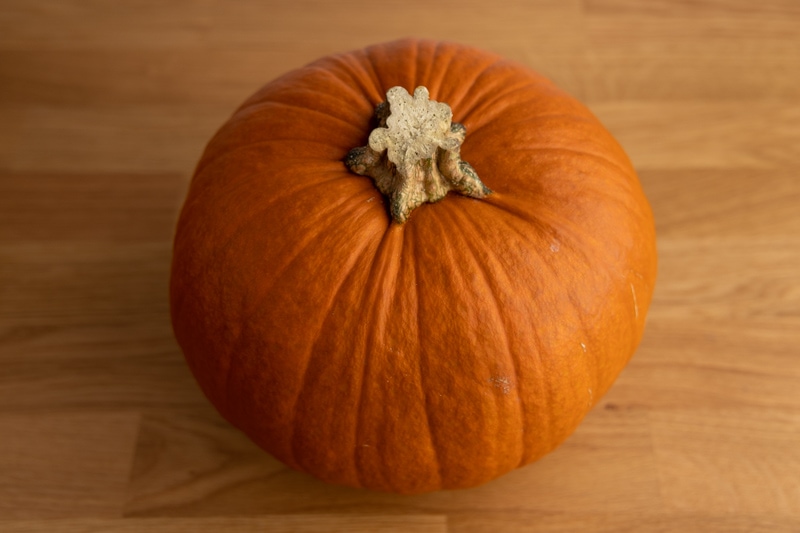
How Long Do Pumpkins Last?
| Counter | Fridge | |
|---|---|---|
| Whole pumpkin | 1- 2 months | |
| Cut-up pumpkin | 4 – 5 days | |
| Canned pumpkin puree | Best-by + 6+ months | |
| Open pumpkin puree | 5 to 7 days |
Whole disease-free pumpkins keep for up to two months if you store them in a cool and dry place. Once you cut up a pumpkin, it keeps in the fridge for 4 to 5 days if sealed tight.
If you need more time, you can freeze those pumpkins. The most popular option is probably to freeze pumpkin puree.
Pumpkins last that long because they belong to the winter squash group that grows thick skin. That skin helps the pumpkin stay fresh for longer.
Other winter squashes also last a long time: butternut keeps for up to two months, while spaghetti squash lasts for about a month. Unfortunately, summer squashes don’t last as long, which is why zucchini keeps for up to two weeks.
Pumpkins last quite some time, but sometimes that’s not enough.
If those storage times are too short, you can freeze pumpkins or freeze pumpkin puree. Or you can bake a pumpkin pie and freeze it too. Hell, you can even freeze pumpkin pie filling if you want.
Remember that when you buy pumpkins at a grocery store, you never know how long they’ve been sitting on the vegetable stand. So to get the most bang for your buck, you should pick the best ones available.
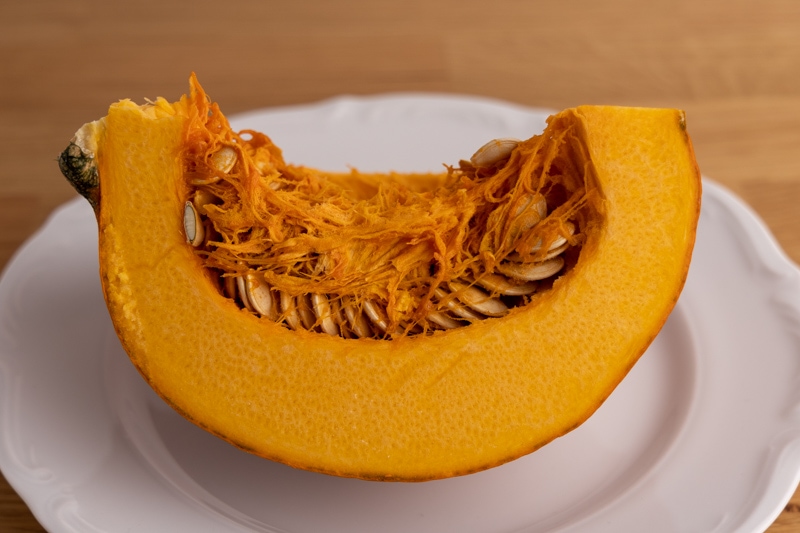
Max Shelf Life
Pumpkins, generally speaking, can last for up to 3 months as long as they’re healthy and firm. If yours are bruised or have some visible decay, they’ll probably last only a couple of weeks at best.
That said, to get those full three months, you need to store them between 55 and 60°F (12 to 15°C) and relative humidity of 50-70%. That makes it difficult or even impossible for most of us.
In other words, if you don’t have a root cellar or a reasonably cold (but not fridge-like cold) basement, your whole pumpkin won’t last that long.
If you leave your pumpkin in a veggie basket in the pantry or kitchen, you’ll get up to 2 months of storage. That’s why I suggest two months instead of three like some other sources do.
Next, let’s talk about grabbing the best pumpkins in the grocery store.
Pumpkin Selection
Pick pumpkins that are firm to the touch and feel heavy for their size.
Make sure the stem is still attached and that it’s firm. A softish or rubbery stem means the pumpkin has already started (or will start soon) losing liquid and going soft, and it definitely won’t last those two months that I mentioned.
Next, avoid bruises, wounds, and any visible cuts on the skin.
Pumpkins might appear tough on the outside, but they are easily damaged if the rind is punctured. When that happens, the pumpkin decays from the inside out, and you’ll only learn about it after cutting it open a month later (see a photo in the spoilage section).
That said, the rind doesn’t have to be picture-perfect. Some rougher areas that are harsh to the touch and a bit dry are okay. 98 out of 100 times, the flesh inside will be perfectly fine.
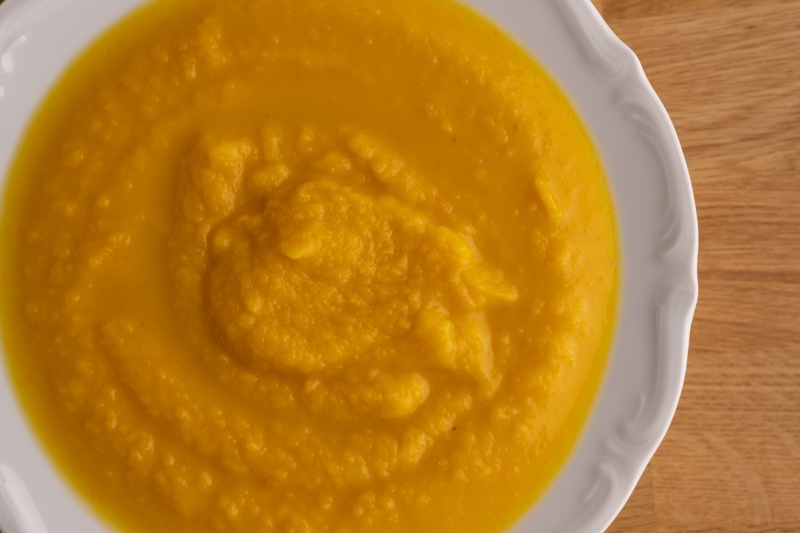
Cooked Pumpkins
Cooked pumpkins stay safe to eat for 4 to 5 days if you refrigerate them in a sealed container. If you need more time, freezing is always an option.
(Homemade pumpkin puree lasts for 4 to 5 days too, as you might imagine.)
Let the cooked pumpkin cool, then transfer it to an airtight container and place it in the fridge. And make sure the cooling time doesn’t take more than two hours.
(You might know that as the 2-hour rule.)
Of course, it’s up to you if you follow the 2-hour rule to a tee.
For instance, it’s been a long day, you forgot to refrigerate the pumpkin, and it’s been sitting on the counter for 3 hours already. If that’s the case, it’s your call whether you toss it or refrigerate it.
But if you accidentally left it out overnight, discard it no matter what. It’s no longer safe to eat, period.
How To Tell If a Pumpkin Is Bad?
Throw out a pumpkin if:
- It’s rotten. Large black spots mean the pumpkin is done for. You can cut off small spoiled areas (with some excess), of course, but if the decay takes over, it’s time for the squash to go.
- It feels hollow or is mushy or seeping. Either of these informs you that your pumpkin has lost quite a lot of water and that it’s probably not good enough for eating quality-wise. It’s not spoiled, technically speaking, but you’ll probably prefer to toss it anyway.
- You store the leftovers for too long. If your cut-up or cooked pumpkin has sat in the fridge for a week already, that’s enough. Toss it even if there aren’t any typical signs of spoilage like an off smell or mold.
- It’s moldy. Cut or cooked pumpkins grow mold sooner or later, and if things get to this point, the squash is gone.
As usual, if there’s anything else that you find suspicious, err on the side of caution and toss the veggie. Better safe than sorry.
One exception to this rule is when the seeds and gunk inside the pumpkin become stringy and gross. That’s normal for prolonged storage, so you spoon those out as usual and enjoy the pumpkin as if nothing happened.
Last, here’s what a damaged rind that’s starting to rot might look like:
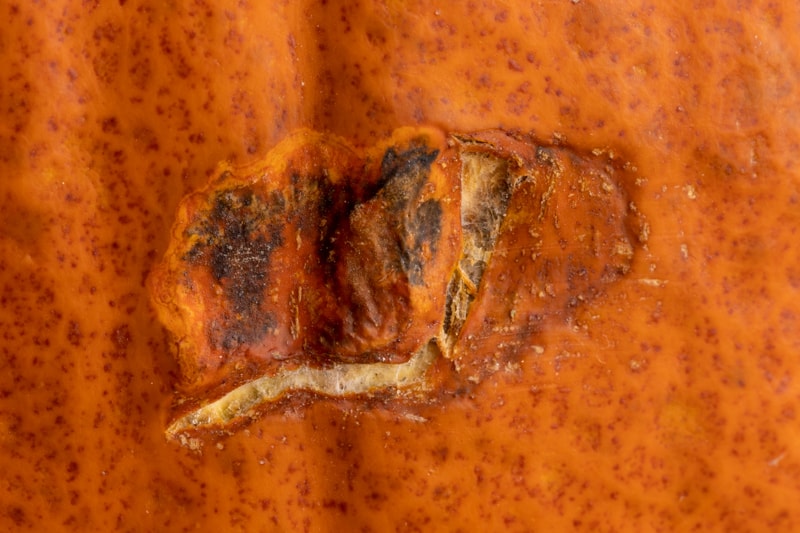
It doesn’t look that bad, but when you cut it open, it shows a different story:
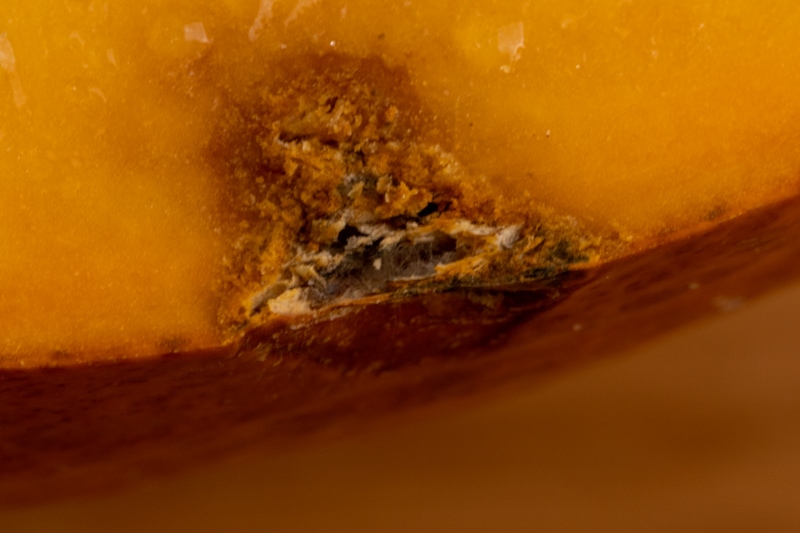
How To Store Pumpkins
Store pumpkins in a cool and dry place and allow for air circulation. Make sure they are away from apples, pears, and other ripening fruit.
Once you cut up your pumpkins, refrigerate the leftovers in a freezer bag or container.
Those are the basics. Let’s get into details.
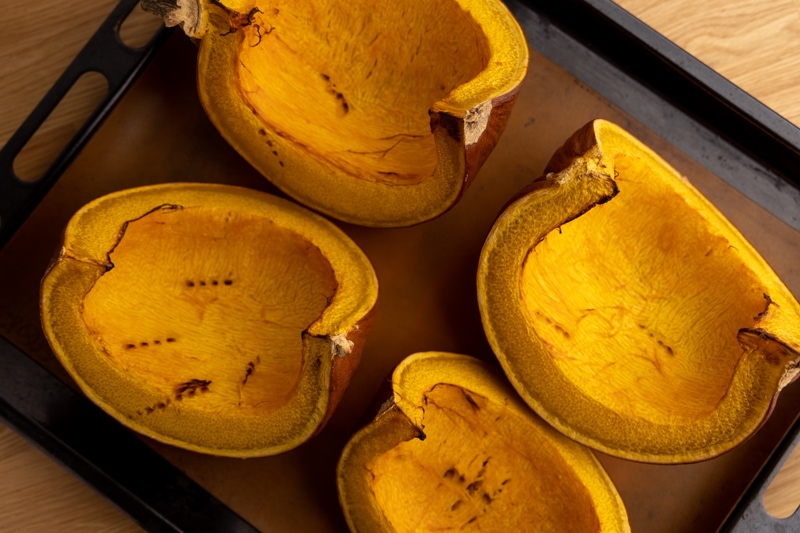
Temperature
The best temperature to store pumpkins is between 55°F and 59°F (or 12.5°C and 15°C). That’s the sweet spot that allows them to last as long as possible.
Some sources recommend a slightly lower temperature of 50°F to 55°F (10°C to 12.5°C), but to me, it’s safer to go with the recommendation above.
In other words, pumpkins don’t like it when it’s chilly. They start to deteriorate much quicker in temperatures below 50°F (or 10°C).
Long story short, if you have an unheated basement or garage that’s cool (but not too cool), it’s an excellent place for long-term pumpkin storage. But if you don’t, storing pumpkins in the pantry or a cupboard in the kitchen is a better option than placing them in the fridge.
Higher storage temperature means quicker weight loss (water loss, basically) for your pumpkins. And that results in shorter shelf life, hence my 2-month recommendation.
Humidity
Whole pumpkins last the longest when the relative humidity is between 50 and 70 percent.
That means there’s no condensation on the rind, so it’s difficult for bacteria and fungi to grow and thrive. But it also means that the pumpkin doesn’t dehydrate too quickly because it sits on a dessert. Pumpkins need some humidity.
To prevent any moisture accumulation on the rind, a bit of air circulation is in order.
That means storing pumpkins in a wire basket or another container that allows them to breathe. And definitely not in a sealed plastic bag.
Ethylene-producing Fruits and Veggies
The last thing to remember is to keep pumpkins (and squash in general) away from ripening fruit such as apples, pears, and the like.
Many ripening fruits and veggies release ethylene gas, which helps them mature. But the excess of that gas causes pumpkins to yellow and shortens their life span. You don’t want that.
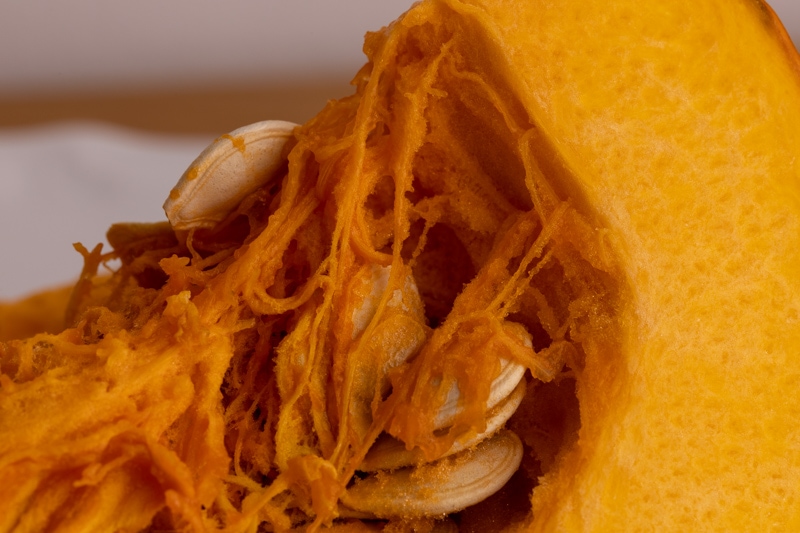
How to Store Cut Pumpkin?
Refrigerate cut pumpkins in an airtight container or a freezer bag.
If you have the squash halved or quartered, remove the seeds and place the pumpkin in a freezer bag. If you diced or cut it up, transfer everything into an airtight container or freezer bag and seal tight.
Leaving the seeds and scooping them out only before cooking doesn’t affect how long the pumpkin will stay good for, but you might as well take care of that when prepping the squash. This way, the refrigerated pumpkin will be ready to use without any further prep.
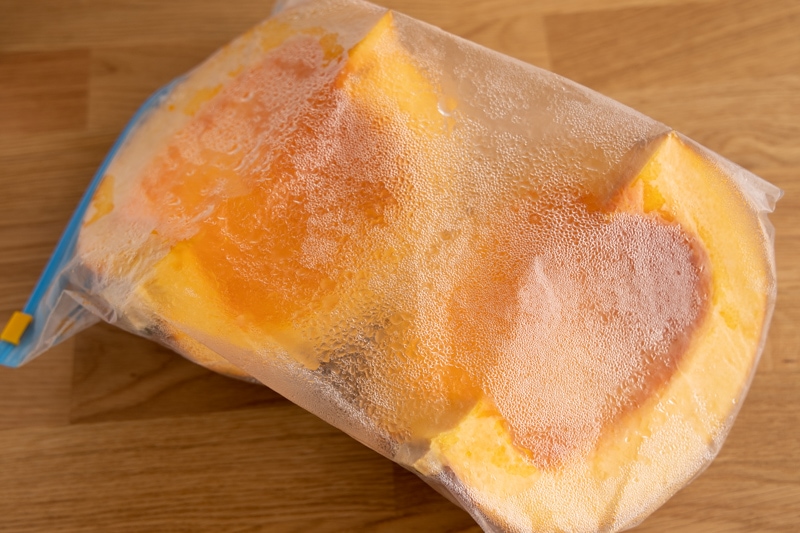
Also, please note that there will be condensation in the bag if you’re storing halves or quarters. If you need the pumpkin to last for the full 4 to 5 days without any issues, consider wiping the excess moisture after one or two days of storage.
Last, if those few days aren’t enough for you, you can always freeze the pumpkin for later use. It’s a great way to preserve it if you bought a giant one that you cannot use within a couple of days.
Alternatively, you can cook it and freeze one of the ways I mentioned earlier.
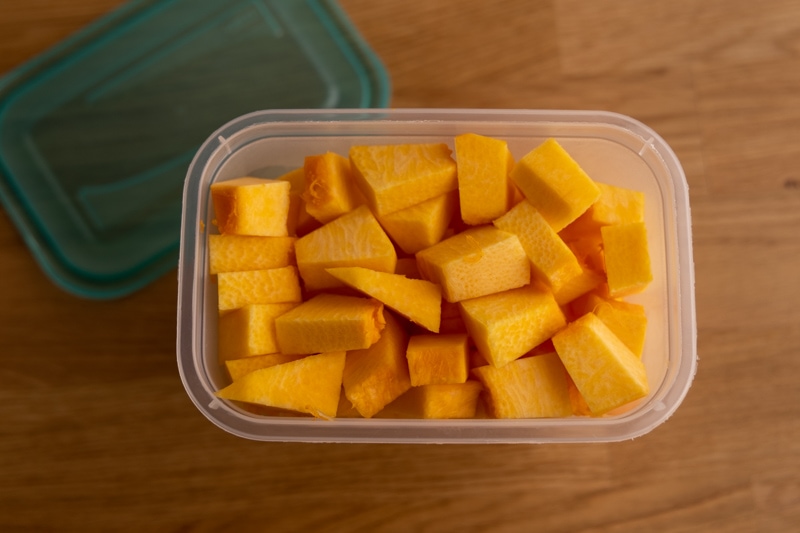
Pumpkins Shelf Life and Spoilage Summary
Thank you for reading this short guide on pumpkins. Let’s briefly recap what we’ve covered above:
- How long do pumpkins last? Whole pumpkins last for up to two months if stored in the kitchen or pantry. Once you cut it up, it keeps in the fridge for 4 to 5 days, and so does cooked pumpkin.
- How do you know if a pumpkin is bad? Throw out pumpkins that are soft, leaking, or rotten. Once you cut them up or cook, look for mold before eating and toss them if you store them for more than a week.
- How to store pumpkins? Store pumpkins in the pantry or kitchen, in a cool and dry place away from heat sources. After cutting or cooking, seal the leftovers tightly and refrigerate them.
Rotten Records: Share Your Snap!
Caught some food past its prime? Upload your photo to “Rotten Records” and help others spot the signs of spoilage. Every image makes our food community safer and more informed!
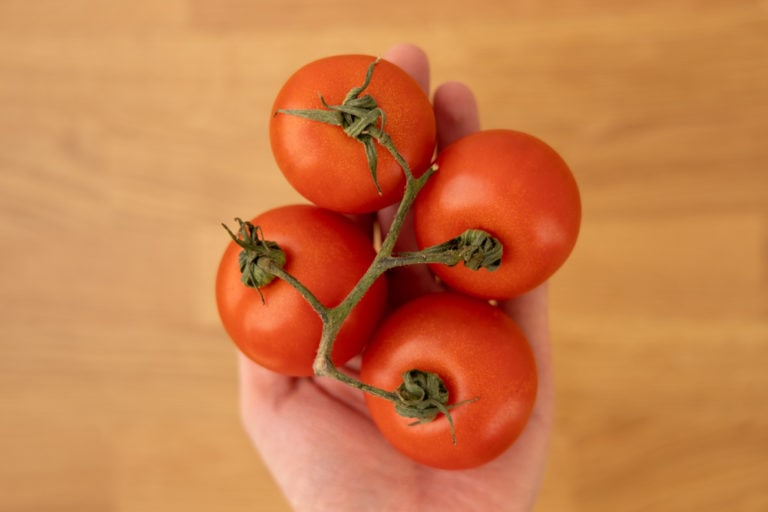
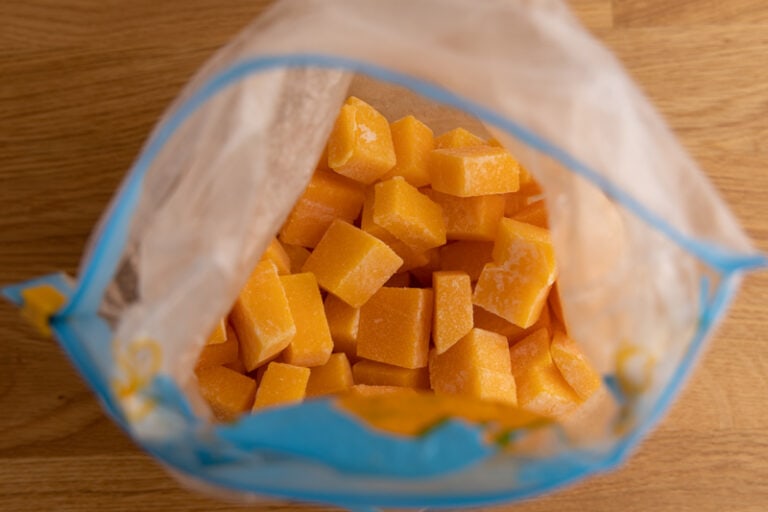
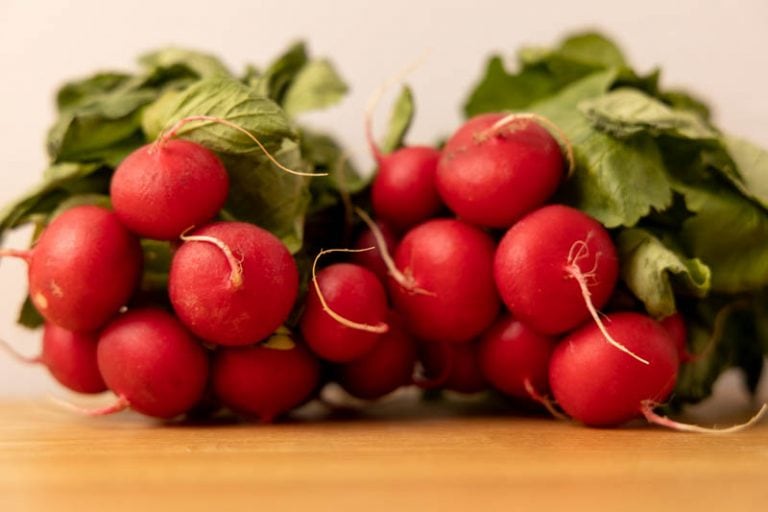
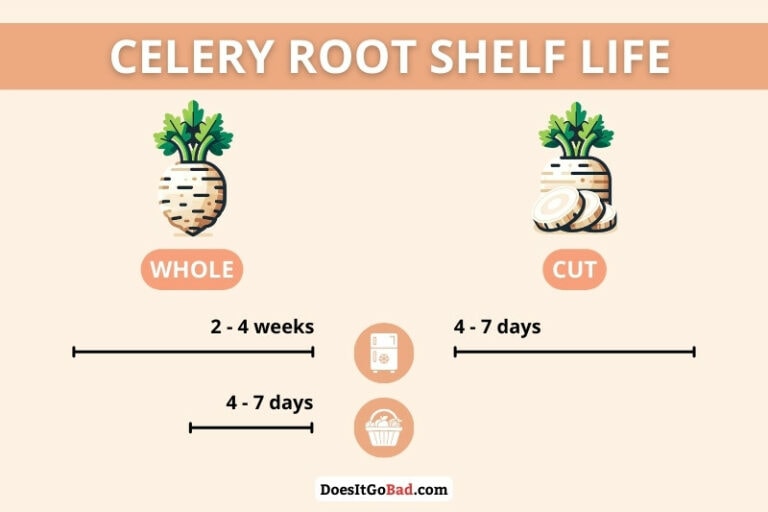
![How to Tell if a Sweet Potato Is Bad? [4 Spoilage Signs]](https://www.doesitgobad.com/wp-content/uploads/Inside-of-old-sweet-potato-768x512.jpg)
![Does Celery Need to Be Refrigerated? [Celery Storage Practices]](https://www.doesitgobad.com/wp-content/uploads/Celery-in-airtight-container-768x512.jpg)